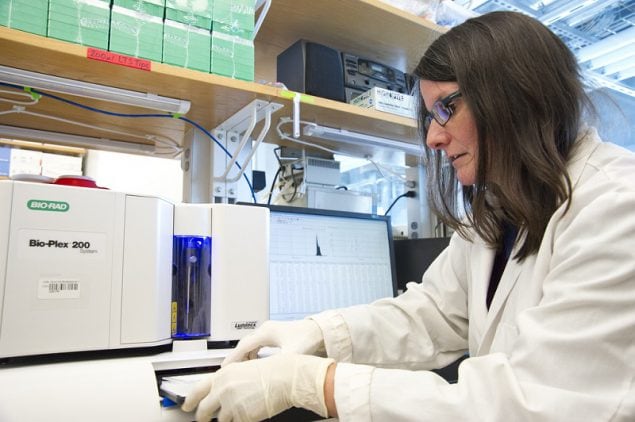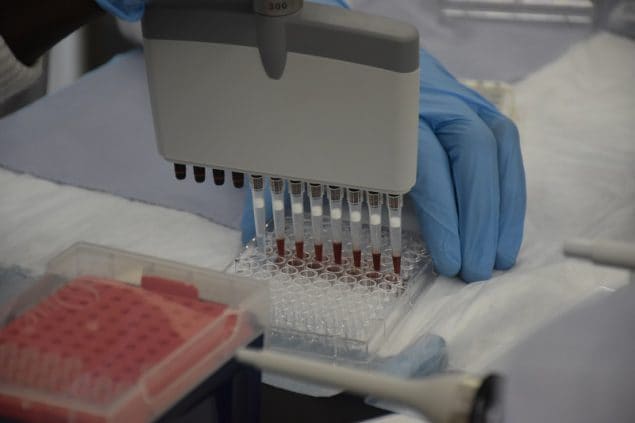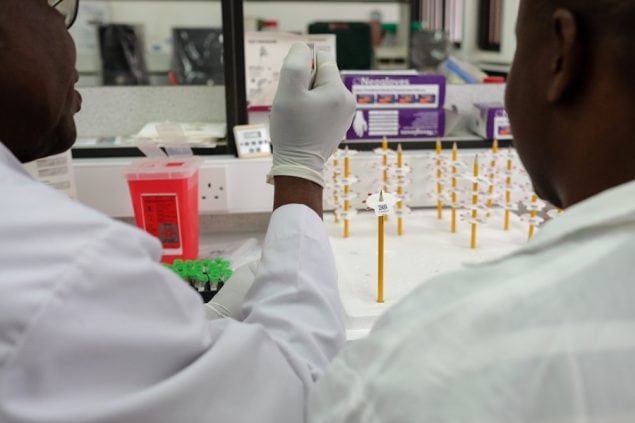8 Major Health Problems in The World Today
Nabin Paudyal Co-Founder, Siplikan Media Group – Culled from Nabin’s Article
Health problems are becoming more common than ever in the world today. This probably has to do with both progress in medical science, because of which it has been easy to diagnose health problems, and also people’s lifestyle, which is becoming increasingly unhealthy.
The principal causes for common health issues are unhealthy diet, lack of exercise, environmental degradation, high stress levels and genetics. While in the past, communicable ailments were the major issues, non-communicable diseases are the primary issues today.
Below, we discuss the most prevalent health issues in the world today along with their symptoms, causes and preventive measures.
1. Cancer
Cancer remains one of the major health concerns of the 21st century. Its occurrence has been increasing with modernization and advancement perhaps due to environmental deterioration and increased exposure to chemicals and radiation.
While there’s no particular cause of cancer, various risk factors contribute to the genesis of particular kinds of cancer. Tobacco and smoking, obesity, alcoholism, too much sun exposure and radiation are among the common risk factors, while genetics also plays a pivotal role with increased risk among siblings and relatives.
Various infections like Hepatitis B virus and Human Papilloma virus are also among the progenitors of cancer. Prostate cancer and breast cancer are the most common cancers in males and females respectively.
While a number of anticancer drugs, chemotherapy, radiation therapy and surgery are used in treating cancer, complete treatment is still far off for many neoplasms. Hence, early detection of cancer is crucial.
Regular screening for cancer, lifestyle modifications like regular exercise, healthy diet, quitting smoking and tobacco are the preventive measures.
2. Diabetes
Diabetes is a chronic condition associated with abnormally high blood glucose levels: fasting blood sugar level greater than 110 mg/dl, random blood glucose level greater than 200 mg/dl.
Blood glucose level is maintained in normal range of 70-110 mg/dl by insulin, a hormone secreted by β cells of pancreas. Any abnormality that causes damage of β cells, and thus little or no insulin, contributes to pathogenesis of Type 1 diabetes commonly seen in children and youth. Type 2 diabetes however results when body cells become resistant to action of insulin and it commonly affects older people.
Diabetes leads to many acute and chronic complications affecting almost all parts of the body – brain (stroke, cognitive impairment), eye (retinopathy, glaucoma), heart (heart attack, congestive heart failure), nerves (peripheral neuropathy), ear (hearing impairment), skin (increased risk of infections). It thus remains one of the most debilitating diseases.
Preventive measures include lifestyle modifications like regular exercise, inclusion of fiber-rich whole grains, nuts, vegetables and fruits in diet, maintaining normal weight and regular checkup.
Treatment regimen for type 1 and type 2 diabetes differ in that type 1 diabetes treatment includes insulin while type 2 diabetes are cured by sulfonylureas (glibenclamide, glipizide), meglitinides (repaglinide), biguanides (metformin), thiazolidinediones (pioglitazone).
3. Heart diseases
Heart diseases like myocardial infarction, angina, and heart failure have been associated with a high fatality rate, killing more people than all forms of cancer combined in the United States.
Smoking, high-fat diet, lack of exercise and sedentary lifestyle are the common causes, while other body conditions add fuel to the fire aggravating the disease. Atherosclerosis, diabetes, hypertension and infections are common culprits.
Hence, preventive measures like putting an end to smoking, minimizing salt intake, regular physical exercise, consuming a diet low in fat and having regular health checkups will do a lot in reducing your risk for heart diseases.
4. Kidney disease
Renal failure remains one of the main global medical concerns. Kidney disease is assessed by measurement of GFR, which is the ability of kidneys to filter blood. Normal value of GFR is 125ml/min and by definition decrease in GFR is kidney failure.
Causes of acute kidney injury include pre-renal causes like dehydration, blood loss and shock; renal causes include infections of kidney; obstruction to urine flow falls under post-renal causes.
When kidneys don’t function for more than 3 months, it’s called chronic kidney disease, unlike acute kidney injury which is acute in onset. Symptoms include reduced urine volume, nausea, loss of appetite, muscle cramps, etc.
Guidelines for kidney disease prevention include reduced protein intake, salt restriction, adequate fluid intake, cessation of smoking and maintaining normal body weight. Supplements like Forskolin really help in weight loss. Since kidney failure is mostly caused by diabetes and hypertension, treatment strategies include control of blood glucose level and blood pressure by necessary hypoglycemic and anti-hypertensive drugs. Kidney transplant is reserved for serious cases.
5. Alzheimer’s disease
Alzheimer’s disease affects cognitive function of the brain, and is more common in females than in males. In males, another brain disease—Parkinson disease—is more common.
While the exact cause of Alzheimer disease remains unknown, its widely known that advancing age and family history are common risk factors along with obesity, hypertension and Down syndrome among others.
Pathophysiology involves accumulation of senile plaques or beta-amyloid plaques and formation of neurofibrillary tangles (NFTs) ultimately leading to loss of neurons and synapses necessary for cognitive functions of the body.
Treatment therapy includes only symptomatic therapies–cholinesterase inhibitors. Drugs are used according to symptoms, like antidepressants for depression and for agitation, sleep disorders, etc. Routine physical exercise will have effect on disease progression as increased cardiorespiratory fitness has been shown to slow disease progression.
6. Influenza
While a healthy person can fight influenza on his/her own, immunocompromised people, especially children, old, pregnant women, and people with conditions like diabetes and hypertension are at increased risk of developing potentially fatal pneumonia.
Increased incidence and death toll due to swine flu (H1N1 virus) led the WHO to declare the first flu pandemic in 41 years on June 11, 2009. It affected all continents except Antarctica in 2009-2010 season and has been regular problem since then, though luckily mortality rate has been similar to usual flu.
With complications like pneumonia, influenza poses a serious threat especially to above mentioned risk groups. Preemptive vaccination is the most effective way to prevent disease while regular washing of hands, preventing unnecessary touching of nose and mouth and wearing masks are also to be followed.
Two antiviral agents, Zanamavir and Oseltamavir, are effective drugs to reduce the effects of swine flu, with newer drugs under study. There is evidence, however, of drug resistance due to excessive and indiscriminate use. Hence, necessary precautions and prevention are the most efficient way to save oneself from falling victim to the influenza virus.
7. Stroke
Stroke or cerebrovascular accident is a condition potentially caused when blood supply to brain is interrupted thus leading to death of brain cells. It may be caused by ischemia– due to blocked artery—or it can be hemorrhagic—due to bursting of blood vessel.
Risk factors include obesity, physical inactivity, hypertension and diabetes, while genetics also plays a role. Since it can lead to a number of complications like paralysis of contralateral sides of the body, loss of cognitive function, emotional problems and abnormal behaviors, and also due to the fact that treatment for any disease of the brain is complicated, one ought to have adequate knowledge about stroke, about its risk factors in general and everyone should develop healthy lifestyle.
8. AIDS
AIDS, having originated from chimpanzees, is already a global pandemic. About 37 million people are living with HIV AIDS with 17 million unaware of the fact they have the virus in their body. Sub-Saharan Africa is the most affected region with 25.8 million victims there, with significant number of them being children due to mother-to-child transmission either during pregnancy, childbirth or breastfeeding.
Transmitted through body fluids–blood, semen, breast milk, vaginal fluid, rectal fluids—it can be prevented if transmission of fluids can be avoided. Hence, safe blood transfusion, safe sex, limiting the number of sexual partners, getting tested and treated for other STDs are the effective preventive measures.
Antiretroviral therapy (ART) helps HIV infected people to minimize virus load and stop progression of disease thus, reducing risk of transmission to other people as well. Antiretroviral therapy is provided to pregnant mother to minimize risk of transmission to child while new born child should also receive the treatment for 6 weeks. As a post-exposure prophylaxis (PEP), it is also used in cases possibly exposed to HIV as in breakage of barrier during sex, exposure to virus in health workers, etc.






























